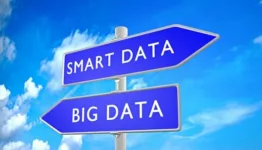While the Internet has given online sellers the luxury of collecting an abundance of data from users, advancements in cloud technology have made accessible both storage space and robust computing power. Most data set out there are quite useless unless they are validated, organized and deciphered accurately. You need to know what you are looking for in this mine of data and ask the right questions. Analytics can help point your business approach in the right direction – but data must be analyzed accurately.
So What Is the Source of This Data?
The data comes from all kinds of sources like emails, social media sites, and a user’s browser history. This information exists in the cloud and when analyzed, can reveal patterns and the latest trends. The data so collected is called big data, and it is an unexplored area that could pave the way to taking your business to the next level.
Retailers come up with all sorts of strategies to attract new customers and retain the existing ones. These include having discounts, exclusive offers, and first-time customer bonuses. But how do you know if it is giving you good results?
While this is effective, it is unreliable. The development seen in technology over the last few years has led to the availability of powerful software that can help formulate business tactics and lead to a more competitive pricing strategy. Although data analytics is going to shape the future by giving you more smart data, you need to know how you can utilize it for the betterment of the business.
Filter Your Data
You may have access to a lot of data, but that means nothing unless you analyze it with the right tools. The first step is to cut down irrelevant data. You need to limit the information you have by applying filters on your data sets. You can segregate data based on the demographic or the most recent data. All you need to remember is to pick the information that is more relevant to your business need.
Now you can narrow the data down to what counts the most for your requirement. You can even segment the data into parts which will help you isolate the information you need.
Ask The Right Questions
You need first to be clear of your margins and goals. Smart data can help understand shopper’s behavior. It will help you determine which product will sell more or which marketing campaign provides the best results. With this knowledge, you can make the right moves and arrive at a competitive pricing strategy that helps you stay ahead in the market.
Smart data also gives you information about which channels are used and reveals the best way to grab the attention of the customer. It tells you which of your strategies have worked. Turning big data into usable and smart data can also help you better the shopping experience on your site.
Invest Where It Counts
Analytics will help you decipher the information you have and help you spend where it counts. For example, with smart data, you will know which of the social media platforms has given you best returns. You can direct your investments to that channel and reduce the investments in others. Consumer targeting is easier when you gain an insight into their preferences through this data. In this way, you can invest and target the right set of customers.
Collaborations Between Manufacturers And Retailers
The data is not just beneficial for the retailers. It can also help manufacturers determine how they can improve their product and which ones they should invest on. The gap between them has to be bridged so that manufacturers gain smart data that is beneficial to them.
There is an abundance of untapped potential in smart data, so retailers and manufacturers need to be brutally honest in seeing if the chosen data set is helping the business or not. If it isn’t applicable, you can work smarter and get different results from the collected data. By depending on big data, you will find key insights in your business and make better decisions with more relevant data.








